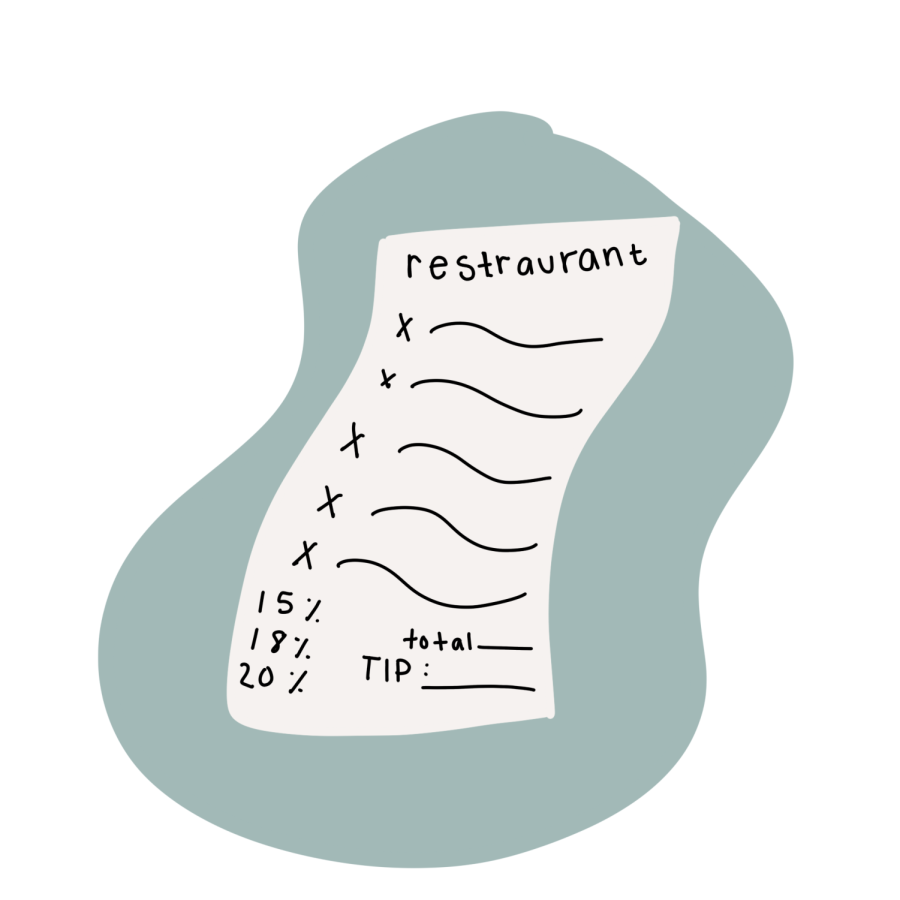Don’t bite the hand that feeds you
November 1, 2022
Although leaving more than a three to five percent tip for your server might earn you some dirty looks at a European restaurant, that is certainly not the case in modern-day America, where patrons are expected to leave at least 18 to 20% on top of their bill. This is because most restaurants in the United States do not account for the cost of service when pricing menu items, leaving it up to the customer to decide how much their experience was worth.
There are many theories as to where the practice of tipping originated, many of which have strong ties to post civil war policies. One theory, discussed in a 2019 article from TIME, suggests tipping was introduced as a way for restaurant owners in the mid-1800s to hire emancipated individuals without pay.
Regardless of how it found its roots within America, tipping rose in popularity throughout the 19th century as the working class secured its foothold in the economy. The phenomenon was popular among restaurant owners and customers as many believed an hourly wage would not adequately incentivize customer service workers.
Tipping continued to spread across the U.S. for several years, but not without its fair share of pushback. In 1915, six U.S. states — Washington, Mississippi, Arkansas, Iowa, South Carolina and Tennessee — banned the practice with a promise to fine or imprison anyone who received a tip; however, all of these laws were repealed by 1926, and by 1942, the Supreme Court had ruled that tips belong exclusively to the employee who earns them.
In 1966, tips became an official method of employee income with the creation of the “Tip Credit” system. This system allowed employers to pay tipped positions less than minimum wage so long as customer tips brought the wages to the federal requirements. Today, employers can cash in up to $5.12 in employee tip credits per hour, and the minimum wage for tipped employees is $2.13 — a figure that has not changed since 1991, despite increases to the federal minimum wage in 1992, 1997 and 2007.
Notwithstanding its unpopularity, tipping has replaced most service-based pricing models in American restaurants. However, many people still feel as though it is not their responsibility to pay the wages of service workers at the restaurants in which they like to eat. Nonetheless, anyone who has waited tables for less than three dollars an hour will assure you that this school of thought is simply ignorant and uninformed.
When you go out to eat, a service is performed for you by a group of employees who work hard to ensure that guests return because if they did not, nobody in that building would be able to pay their bills. The service, whether it meets your standards or not, has a set price according to labor and wages — just as the ingredients, kitchen appliances, utility costs and any other calculated expense. Therefore, the tip is not an opportunity to pay extra for great service but rather the freedom to pay less if you feel the service is subpar.
Of course, this begs the question of whether or not tipping culture in the United States has been taken too far, with guests often feeling pressured to tip at fast-casual eateries and coffee shops. In discussing this, however, the distinction between these kinds of establishments — where employees are usually paid at least minimum wage — and full-service restaurants is incredibly important.
The pressure to tip felt outside of full-service dining is likely the result of lagging federal wage laws, although that is a completely different conversation. Similarly, the flawed tip credit system is not a valid reason not to tip at full-service restaurants — it is simply an excuse. Remember that without it, you would not have a say in the service fee that you are charged. The service and pricing models currently employed by most U.S. restaurants have been in place for a long time. Any efforts to change this system must be directed where they will actually be heard, albeit if you do not like tipping, you are far less likely to enjoy the cost of service-included dining.
Currently, 43 out of 50 U.S. states allow tip credits. Thus, refusing to tip will not be perceived as abstinence from the system but rather as taking advantage of it and your server. If you pay for your meal at a full-service restaurant and do not tip, you are sending your server home short while allowing the system to continue as it stands today. So, to tip or not to tip? It is up to you, so long as you are okay with earning a reputation for it. My best piece of advice? Don’t bite the hand that feeds you.








